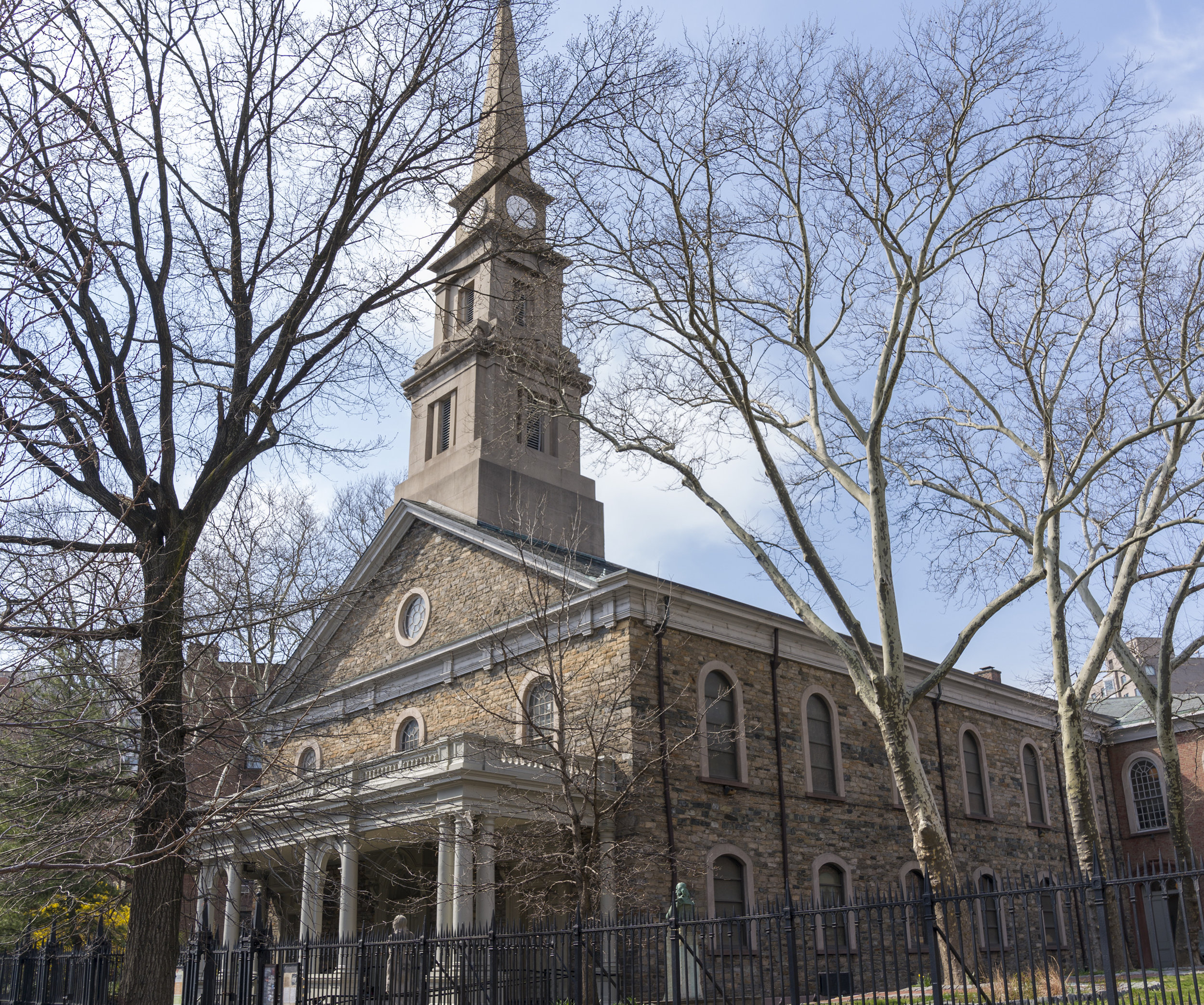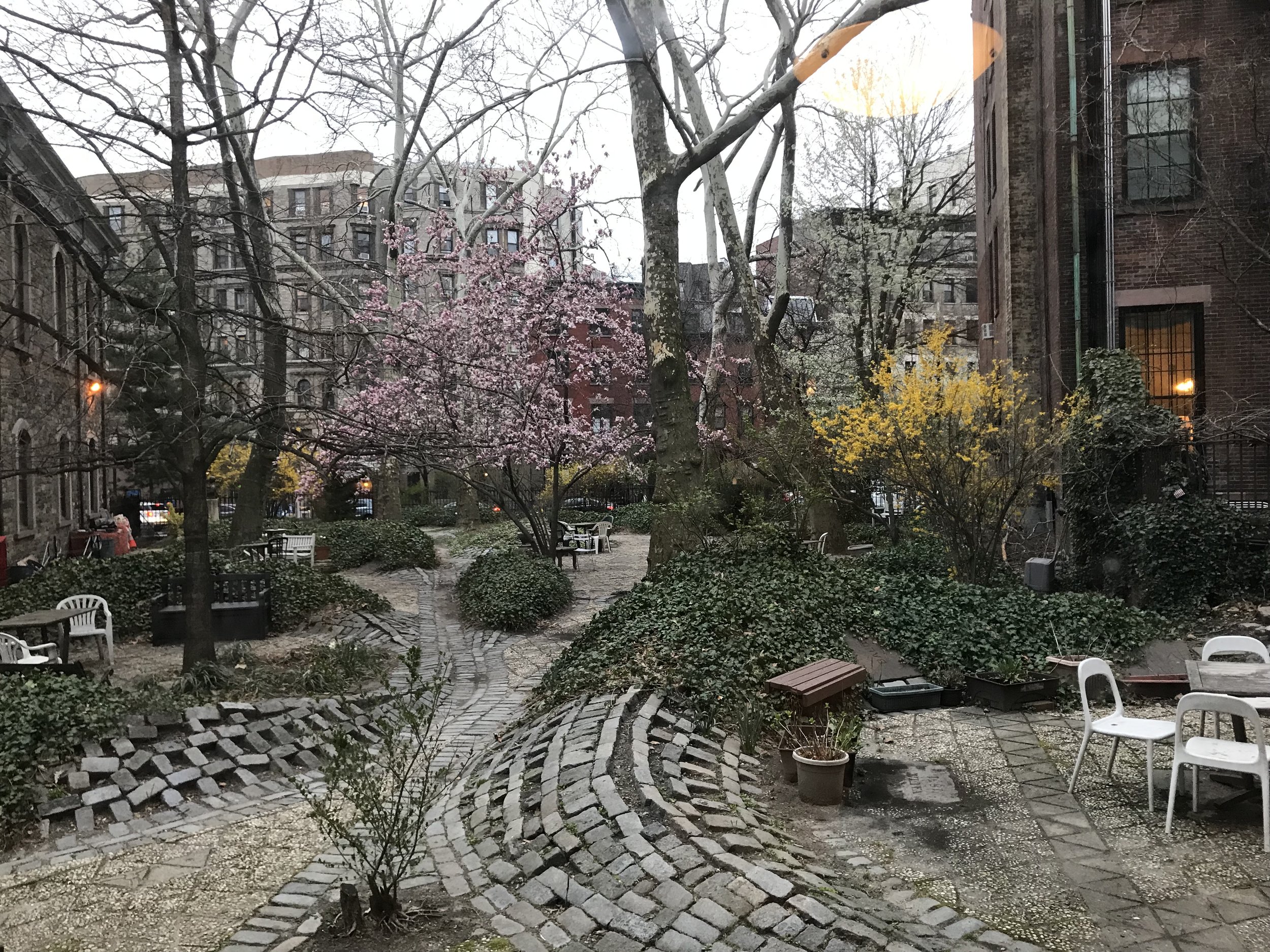St. Mark’s Church-in-the-Bowery has 350 years of history! It’s New York’s oldest site of continuous religious practice, and the church itself second-oldest church building in Manhattan. If you’re planning to visit St. Mark’s and you’re interested in its history, consider taking a self-guided walking tour, provided by the St. Mark’s Historic Landmark Fund.
The First 250 Years
In 1651, Petrus Stuyvesant purchased land for a farm—a Dutch “bouwerij,” pronounced “bower-ay”—and by 1660 he had built the first chapel on the site. It was a family chapel, and when he died, he was buried beneath it. This is why the church building faces true South, even though that makes it skewed from the City’s grid: it originally stood on a rural lane, before the city grew north to meet it.
That structure isn’t the one that stands today, however, because in 1793, the Stuyvesant family sold the chapel to the Episcopal Church for $1. In 1795 the cornerstone of the present fieldstone Georgian style church was laid, built by John McComb Jr. (who also built New York City Hall!); it was consecrated on May 9, 1799. Alexander Hamilton helped incorporate St. Mark’s as the first Episcopal parish independent of Trinity Church in the United States. By 1807, the church was flourishing.
St. Mark’s continued to grow in stature and prominence throughout the 1800s. It was the spiritual home to many notable families, including New York City mayors Philip Hone and Gideon Lee, New York State Attorney General Thomas Addis Emmet, Commodore Matthew C. Perry, and New York State Governor (and later Vice President of the United States) Daniel D. Tompkins. During this time the building was improved as well—in 1828 the church steeple (designed by Martin Euclid Thompson and Ithiel Town) was erected; in 1835, the Parish Hall was built; and in 1836 the Sanctuary was renovated, replacing its square pillars with slender Egyptian Revival pillars. The cast- and wrought-iron fence was added in 1838; in 1856, the Italianate cast-iron portico was added; and in 1861 the building gained a brick addition. In 1903, beautiful stained-glass windows were installed (you can still see some of them in the Sanctuary’s first floor) and in 1913, St. Mark’s was given the altarpiece of the annunciation in the Parish Hall—a reproduction of an original created c.1475 by Andrea della Robbia.












